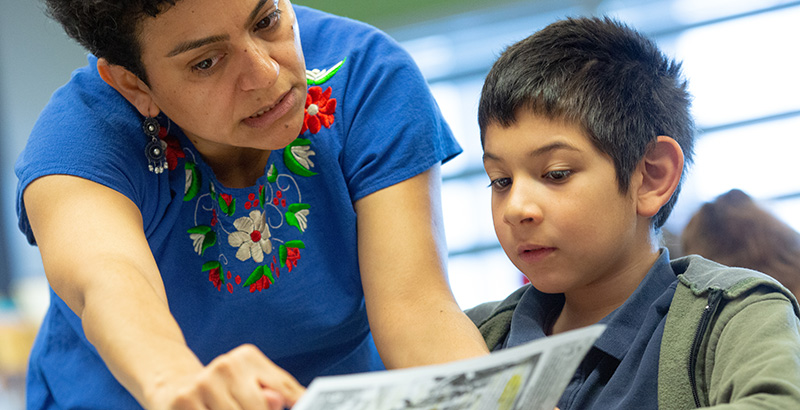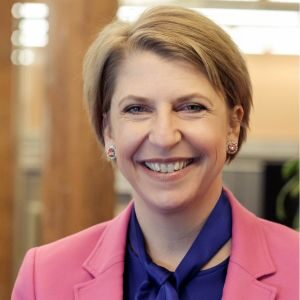Jones: Prioritize Active Learning. Age Matters. Teachers Hold the Key. Ways to Help Special Ed Kids, and All Students, Catch Up — and Move Ahead

This spring marked three years since the groundbreaking Supreme Court ruling on a case involving a fifth-grader with autism, Endrew F. The decision set a new standard: School districts must provide an education that allows each student with a disability to make meaningful academic progress.
Despite legal wins and a growing body of research that shows that most students with disabilities can perform at or above grade level, the proficiency and graduation rates for students with disabilities continue to trail those of their peers. The U.S. education system has yet to find a way to accelerate learning, or, as TNTP defines it, “put every student on a fast track to grade level,” at scale.
COVID-19 increased the size of the problem, but it also might provide a terrific opportunity to attack it. After the virus shuttered schools in March, experts predicted that students would begin the next school year potentially up to a year behind in math. Instructional losses like this will only exacerbate the achievement gap for students with disabilities and other historically marginalized populations (including, among others, students of color, low-income students and English learners), given their inequitable access to distance learning opportunities.
The acceleration conversation can no longer be about a few lucky students. Our schools now have an opportunity to identify and scale successful approaches that can help everyone make enough progress to catch up and truly thrive. Policymakers and schools can draw from research and pockets of success to mitigate instructional loss from COVID and reimagine general and special education for years to come.
To accelerate learning, students must make more than a year of growth in one academic year — something children at very few schools did even before the pandemic. In some instances, efforts to meet struggling students at their level and remediate education only exacerbate the problem.
But there are bright spots, and we can learn from those.
The California Acceleration Project has worked with community colleges to successfully redesign remedial college courses. Remedial classes — typically designed to help students make up only content they’ve missed — were restructured to become accelerated courses. Because of the redesign, these courses allowed students to complete prerequisite and college-level content at the same time and increased their likelihood of completing the college-level course by 2.3 to 4.5 times.
High schools that serve students who are not on track to graduate — often referred to as acceleration schools —prioritize how much students have learned over how much time they have spent in a classroom and embrace student-led, project-based instruction. Outcomes vary, but some of these schools, including OPPortunity Academy Hartford, have higher graduation rates than traditional high schools in the same town or state.
In math, skills build on one another. In order to accelerate the process, Teach to One provides a personalized learning model that ensures that students have the opportunity to gain math skills at the right moment for them. This approach requires creating a custom math curriculum using a specialized algorithm for each child, focusing on the most needed prerequisite skills while exposing students to grade-level content. Research on the approach is mixed, but Joel Rose, founder of the organization that created Teach to One, asserts that if enough time is spent meeting kids where they are, it will ultimately accelerate learning.
These approaches are different, and context is critical to their success, but there are common threads across these and other successful strategies.
Reorganize and focus instruction. Requiring students to follow the same curriculum and learning progression tethers them to a growth trajectory that will at best run parallel to grade-level standards. Instead, acceleration must reorganize and focus future instruction. Successful efforts resist the pressure to cover everything and instead condense material, reduce redundancies in learning progressions and integrate grade-level and prerequisite skills.
Focus on strengths. Research shows that embracing individual strengths and using those to personalize instruction and identify necessary accommodations will maximize learning and pique student interest. Twice-exceptional students — children who are both gifted and have a disability — have been a test case in this approach. Models that improve outcomes are those that prioritize student strengths when designing a learning plan and incorporate accommodations to fill gaps as necessary.
Prioritize active learning and deep engagement. Engaging, rigorous content that is aligned to student interests matters greatly and can dramatically improve learning outcomes. Students meet expectations and dedicate more effort when the material is compelling and relates to their life. Challenging content is essential, and some acceleration models offer project-based learning that requires students to engage with their community or apply new skills and knowledge to solve real-life problems, usually over a long period of time.
Age matters. Schools must tailor models for student age and development. Research shows that reteaching unlearned content is effective in early elementary grades and is necessary to layer skills for more advanced standards. However, in older elementary grades and beyond, a focus on remedial content is detrimental. Older students fare much better when schools foster critical thinking, self-regulation and self-motivation to help with new grade-level content retention.
Teachers hold the key. Educator knowledge is a critical component of all models. Any wide-scale acceleration effort will reimagine education, and teachers will need tools and resources to ensure that they implement the strategies consistently and appropriately. Research shows that any school improvement model must include adequate professional support and growth. Changes in education implementation will fail unless educators receive high-quality professional development and opportunities for collaborative problem-solving.
Accelerating learning won’t be easy. For decades, parents, teachers, advocates and policymakers have fought to improve special education and change students’ learning trajectories, but there are still significant achievement gaps between students with disabilities and their peers. The same is true for other marginalized populations.
Regardless, we cannot let schools return to “normal” after the COVID-19 pandemic. This is an opportunity to reimagine instruction and adopt approaches that forever change learning progressions for all students. Let’s learn from what works as schools adopt policies and curriculum for the 2020-21 academic year and apply that to rethink what is possible for 7.1 million students in special education.
Lindsay E. Jones is president and CEO of the National Center for Learning Disabilities, an organization whose mission is to improve the lives of the 1 in 5 children and adults nationwide with learning and attention issues. You can find NCLD’s “Planning for Equity and Inclusion: A Guide to Reopening Schools” here.
Get stories like these delivered straight to your inbox. Sign up for The 74 Newsletter

;)
